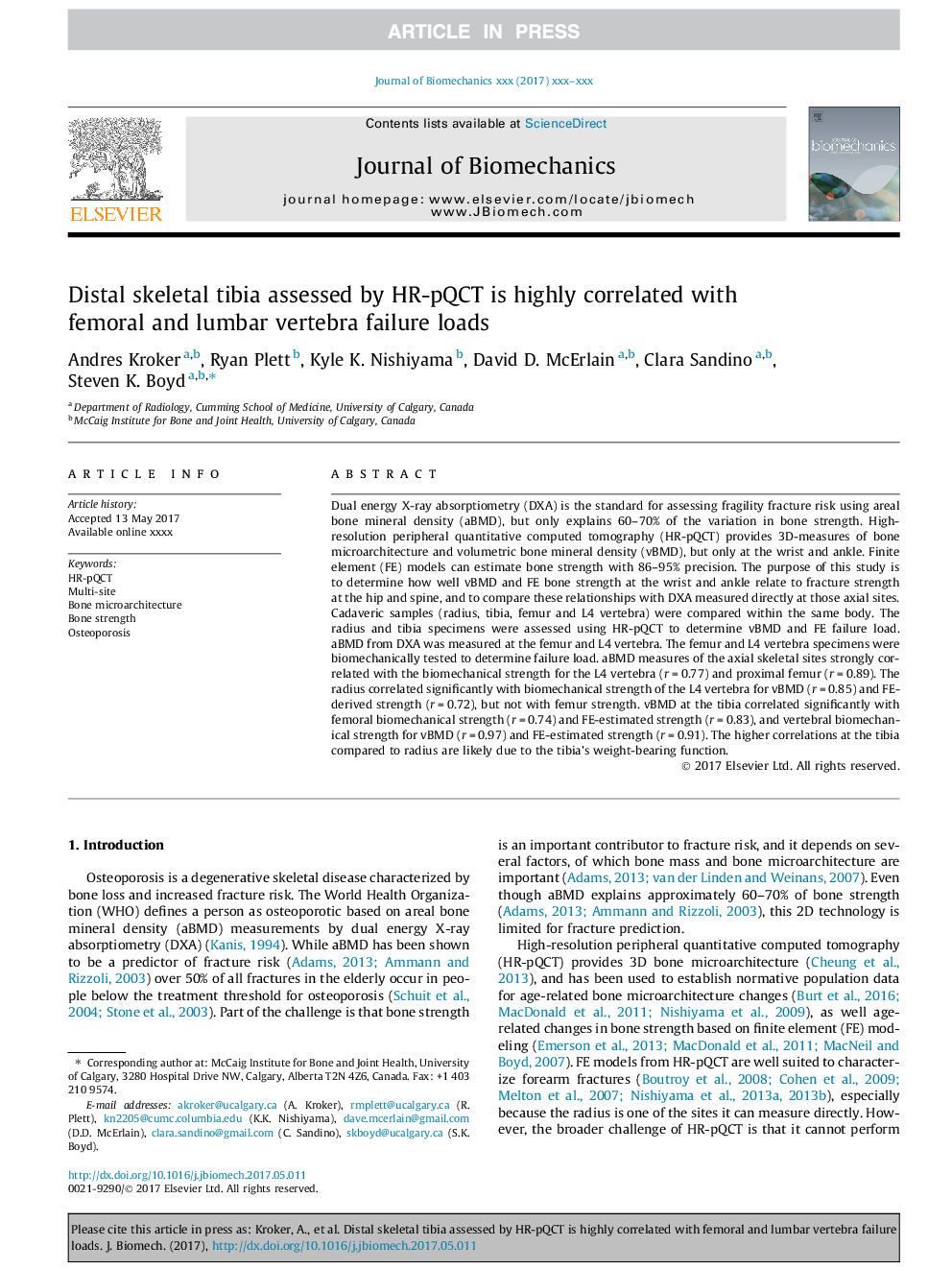| کد مقاله | کد نشریه | سال انتشار | مقاله انگلیسی | نسخه تمام متن |
|---|---|---|---|---|
| 5032257 | 1471105 | 2017 | 7 صفحه PDF | دانلود رایگان |
عنوان انگلیسی مقاله ISI
Distal skeletal tibia assessed by HR-pQCT is highly correlated with femoral and lumbar vertebra failure loads
دانلود مقاله + سفارش ترجمه
دانلود مقاله ISI انگلیسی
رایگان برای ایرانیان
کلمات کلیدی
موضوعات مرتبط
مهندسی و علوم پایه
سایر رشته های مهندسی
مهندسی پزشکی
پیش نمایش صفحه اول مقاله

چکیده انگلیسی
Dual energy X-ray absorptiometry (DXA) is the standard for assessing fragility fracture risk using areal bone mineral density (aBMD), but only explains 60-70% of the variation in bone strength. High-resolution peripheral quantitative computed tomography (HR-pQCT) provides 3D-measures of bone microarchitecture and volumetric bone mineral density (vBMD), but only at the wrist and ankle. Finite element (FE) models can estimate bone strength with 86-95% precision. The purpose of this study is to determine how well vBMD and FE bone strength at the wrist and ankle relate to fracture strength at the hip and spine, and to compare these relationships with DXA measured directly at those axial sites. Cadaveric samples (radius, tibia, femur and L4 vertebra) were compared within the same body. The radius and tibia specimens were assessed using HR-pQCT to determine vBMD and FE failure load. aBMD from DXA was measured at the femur and L4 vertebra. The femur and L4 vertebra specimens were biomechanically tested to determine failure load. aBMD measures of the axial skeletal sites strongly correlated with the biomechanical strength for the L4 vertebra (r = 0.77) and proximal femur (r = 0.89). The radius correlated significantly with biomechanical strength of the L4 vertebra for vBMD (r = 0.85) and FE-derived strength (r = 0.72), but not with femur strength. vBMD at the tibia correlated significantly with femoral biomechanical strength (r = 0.74) and FE-estimated strength (r = 0.83), and vertebral biomechanical strength for vBMD (r = 0.97) and FE-estimated strength (r = 0.91). The higher correlations at the tibia compared to radius are likely due to the tibia's weight-bearing function.
ناشر
Database: Elsevier - ScienceDirect (ساینس دایرکت)
Journal: Journal of Biomechanics - Volume 59, 5 July 2017, Pages 43-49
Journal: Journal of Biomechanics - Volume 59, 5 July 2017, Pages 43-49
نویسندگان
Andres Kroker, Ryan Plett, Kyle K. Nishiyama, David D. McErlain, Clara Sandino, Steven K. Boyd,